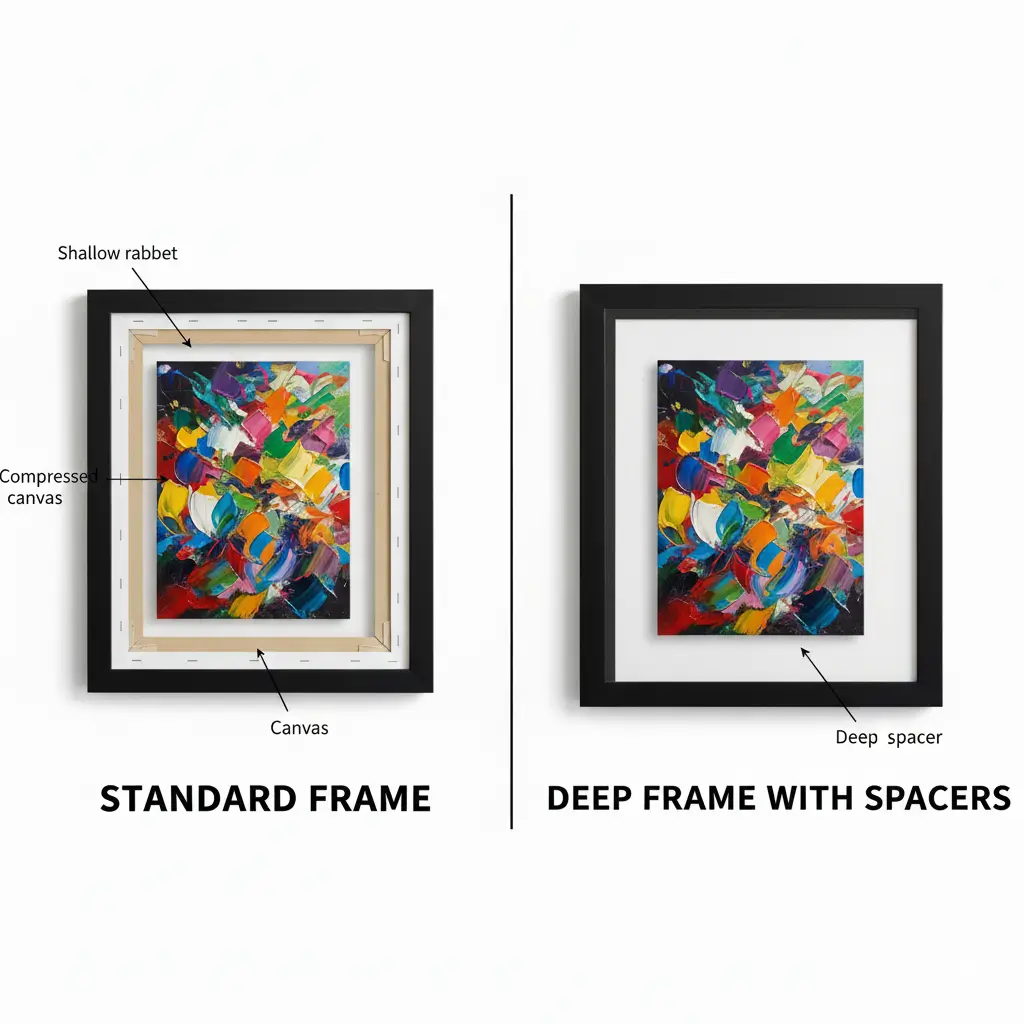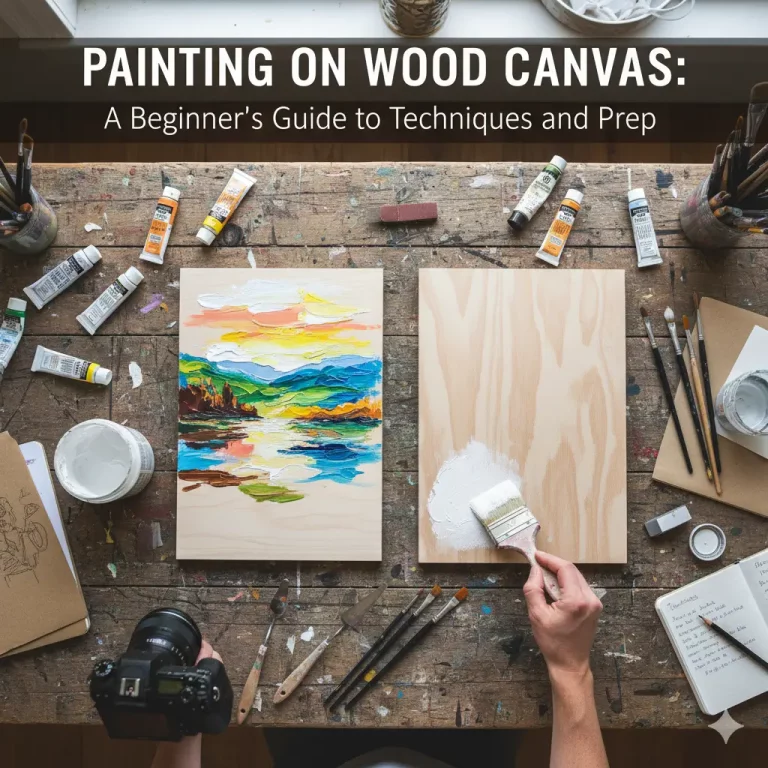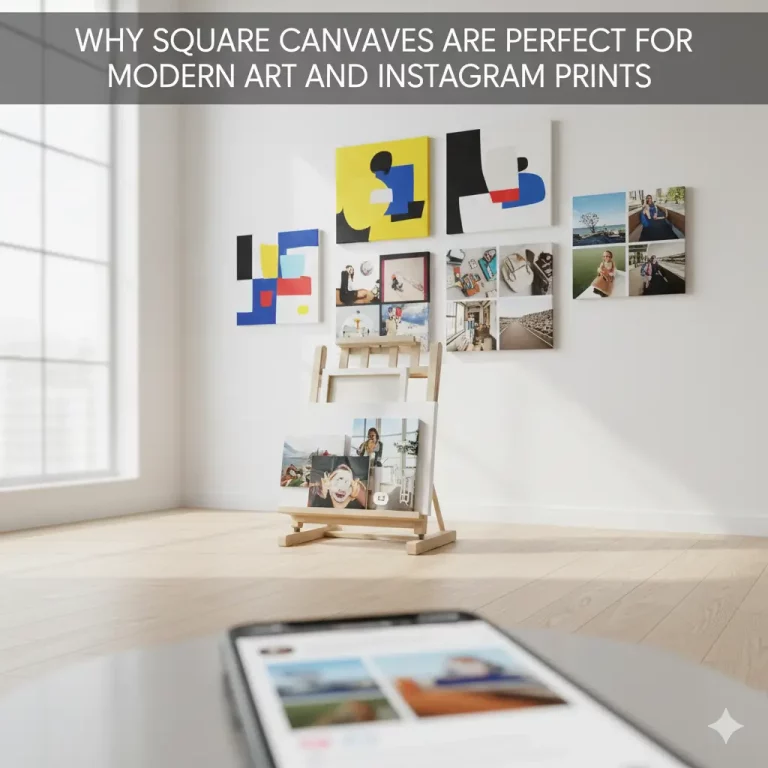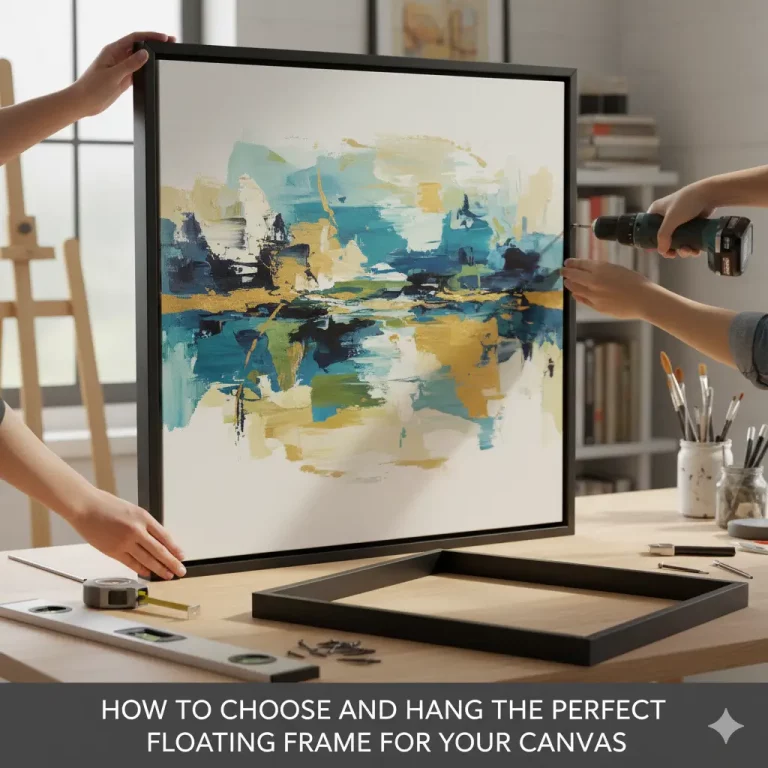When choosing a picture frame, it’s common to focus on the color, style, and molding width to complement your decor and artwork. However, an often-overlooked detail—the frame’s depth—plays a vital role in successful framing. If you’ve struggled to close the backing or secure a thick canvas or matted print in a standard frame, you’re not alone.
Understanding frame depth is essential for creating a secure, attractive display. The right depth ensures your art, whether it’s a heavy watercolor paper or a gallery-wrapped canvas, fits professionally and remains protected. This guide explains frame depth, how to determine what you need, and how spacers can help you frame thicker or more dimensional pieces with confidence.
What is Frame Depth and Why Is It Important?
Frame depth, also called “rabbet depth,” is the inner channel where your artwork, mat board, glazing (glass or acrylic), and backing board sit. A shallow rabbet (around 1/4 inch) fits a single print and basic backing, while a deeper rabbet (1 inch or more) can house thicker packages like stretched canvases or double-matted art.
Choosing the right frame depth matters because:
- Secure Fit: Too shallow, and your artwork may bulge, be hard to close, or even fall out.
- Artwork Preservation: Squeezing thick art into a narrow frame risks damaging stretcher bars or paper surfaces.
- Professional Appearance: A well-fitted frame looks polished, while a bulging or ill-fitting frame looks amateurish.
For more insight on choosing the right frame, visit our Design Guide for Beautiful Frames.
How to Measure for the Perfect Frame Depth
The correct frame depth depends on the combined thickness of everything inside the frame. Follow these steps:
1. Measure Your Artwork’s Thickness:
- Stretched Canvas: Use a ruler to find the depth of stretcher bars—often 3/4 inch for standard canvases, 1.5 inches for gallery-wrapped.
- Heavy Prints or Double Matting: Stack the components (mats, backing, paper) and measure their combined thickness.
2. Add Other Framing Components:
- Glazing: Standard glass/acrylic is about 1/8 inch.
- Mat Board: Single mat is 1/16 inch; double mat is around 1/8 inch.
- Backing Board: Usually about 1/8 inch.
3. Calculate Total Required Depth:
Add all these up. For example:
- Matted print: 1/8 inch glass + 1/16 inch mat + 1/8 inch backing ≈ 5/16 inch. So, select a frame with a 3/8–1/2 inch rabbet.
- Stretched canvas (no glazing): 3/4 inch or thicker, so choose a frame with at least 7/8–1 inch rabbet.
Pro Tip: Always choose a frame just slightly deeper than your total to make installation easier.
For a comprehensive look at frame sizing, check out our Guide to Standard Photo Frame Sizes.
Framing Canvas: Options and Approaches
A stretched canvas can be framed with either a traditional picture frame (if deep enough) or a “canvas floater frame.”
Using a Standard Picture Frame for Canvas
If you want to use a standard frame, ensure the frame depth is enough to fit your canvas. The frame lip will cover the edge, and you’ll need “offset clips”—Z-shaped brackets that attach the canvas to the frame. For more on framing canvas, read our Framing Canvas Art: A Comprehensive Guide.
Floater Frames for Canvas
Floater frames are made for canvas, allowing the entire artwork—including the edges—to remain visible. The canvas “floats” inside the frame, separated by a small gap. This contemporary look is perfect for gallery-wrapped or painted-edge canvases, and floater frames naturally accommodate deeper pieces. Learn more about how to choose the Perfect Floating Frame for Your Canvas.
The Role of Spacers: Protection and Depth
If your art is on thick paper, double-matted, or textured, you may need extra depth between the art and the glass. Spacers are slim plastic or wood strips placed between the glazing and the artwork—essential for pieces framed “full-bleed” (without a mat) or with dimensions.
Use spacers when:
- Framing 3D objects: Shadow boxes or textiles
- Framing textured art: Pastels, charcoals
- No matting: When protecting a photo from glass contact
Each spacer, typically 1/4 inch thick, increases the required frame depth. Review our Ultimate Shadow Box Frame Guide for tips on framing dimensional objects.
For advanced photo preservation, explore our Photo Frame Matting Blog.
Actionable Tips for Framing Thick Art and Canvas
- Always Measure: Calculate the full thickness, including art, mats, glazing, and backing.
- Choose a Deeper Frame if in Doubt: It’s easy to fill excess space, but impossible to add depth to a shallow frame.
- Right Hardware Matters: Use offset clips for deep frames and turn buttons for slim ones.
- Remember Spacers: Essential for un-matted or dimensional art.
- Reach Out to a Pro: Unsure about a special project? Custom framers can help ensure a proper, lasting display.
Paying attention to frame depth means your cherished canvases, textured artworks, and keepsakes can be beautifully and securely displayed—with the professional edge they deserve.





